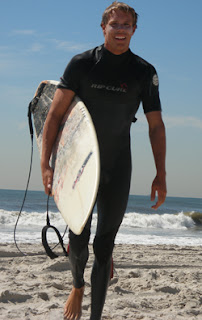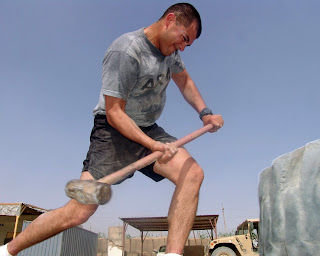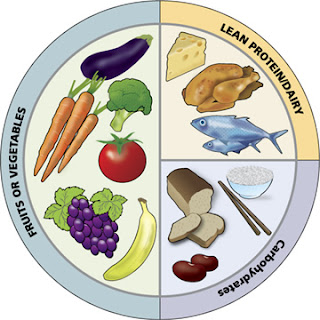Complete Guide Surf Training: Warm-Ups, Exercises, Nutrition
Surfing is among the most enjoyable activities on the planet which is also probably one of the most challenging sports. It needs an array of physical qualities, in order to paddle-out, catch a wave, balance on a surfboard and start laying some big hacking turns and aerial moves.
Quality surf training can help you perform in the water, catch more waves and revel in a great surf session. Surf fitness will help to keep you injury-free, too.
To really get your human body prepared for the surf session, or work out, you will have to add a full human body warm-up. Way too many surfers hop in to the surf with little-to-no warm-up and finally that will result in a personal injury.
Surfing is really a very complete sport. It needs swimming skills, sense of balance, decision taking and constant muscle interactions. Spend a few momemts getting the human body systems ramped up for the training or surfing.
 Great things about a Warm-Up:
Great things about a Warm-Up:
The main element to an excellent surf training warm-up is by using movements to improve the center rate, release tight tissues, lubricate joints and excite the nervous system.
Surf Training Warm-up Movements
Breathing Squats: squat movement, with exhale as human body moves down, inhale as human body arises through squat movement and extend arms towards sky;
Single Leg Chest muscles Rotations: stand using one leg with knee slightly bent and hip pushed backwards; arms put into front of human body, rotate laterally slowly; get a grip on the movement and remain balanced on single leg.
T-Rotation Pushups: begin in pushup position; rotate one arm towards the sky, while simultaneously rotating your body onto one side; you're now balanced similarly, with another hand/arm extended towards sky; rotate back to pushup position and repeat on the other hand.
Warrior Lunge: begin in basic standing position, lunge forward right into a lunge position, extend arms to sky, push up off foot and back to starting position; to advance the movement, you'll repeat the last movement and put in a side bend in either or both guidelines;
Butt Drops: reach towards sky, bend forward to the touch toes; drop butt towards heels as you raise chest to handle forwards; elbows are within the knees and push the knees outwards; lower the butt as lower as you possibly can and keep chest as tall as you possibly can; hold this position for just one inhale/exhale and raise butt right back towards sky, as head and chest move right back towards ground; stretch the hamstrings; repeat the movement;
Bent Shoulder Circles: keeping a right back, with lightly bent knees, bend the torso forward; reach an angle where you commence to feel a light stretch in your hamstrings; bring the arms out to the sides right into a T-position; perform small arm circles for 30 reps, in each direction;
Jumping Jacks or Star Jumps
Standing Knee Hugs: stand together with your spine tall and erect; bring one knee towards your chest, place hands around knee and pull knee towards stomach/chest; bring knee as high as you possibly can without rounding the trunk;
Given that you're heated up, joints are mobile and you're prepared to hop in to that paddle-out, or enter a the right surf training work-outs.
While nothing can certainly replicate what our anatomies must do in the water throughout a surf session, it is possible to fortify the basic required movements and physical demands of surfing.
Even just a couple days per month of quality exercises might have a significant benefit on your own strength, speed, endurance in the surf, and can help with keeping you injury-free in the surf.
Full Human body Movements
Surfing is really a highly dynamic sport that demands the body move around in 3d space, and that means you have to train the body to become strong and efficient in movements, maybe not in isolation.
Dumbbell curls and calf raises will not benefit your surfing. For quality surf training, you intend to use full human body movements that want integration of muscles and develop full human body strength.
Balance is extremely very important to anyone seeking to enhance their surfing. An excellent training curriculum will challenge balance demands, so you not merely have quicker reaction times, but additionally have the ability to dynamically stabilize your joints.
Yet another facet of training that won't only enhance your balance, but additionally help with keeping your lower torso injury free, is single leg movements.
Balance Drills
Single Leg Exercises
Core training has received plenty of hype within the last couple of years, and you can find unfortunately plenty of misconceptions. What's true is a strong core is vital for, not merely staying free-from-pain, but having the ability to surf with speed and power.
It's important to comprehend that the "core" is a lot a lot more than your abs. Core is made up of many muscles during your trunk that help stabilize and transmit movement and power during your human body.
You should train the core in integration, maybe not isolated movements like a crunch which has zero carryover to surfing. Medicine balls, cables, exercise bands, and stability balls are great tools for top quality core surf training.
SHOULDERS AND SPINE
Paddling could be probably one of the most exhausting areas of surfing. Strong shoulders, a durable spine, and a robust core are crucial to strong paddling.
Some extra training for the shoulder and spine complex might help you create a stronger, durable, and free-from-pain chest muscles.
Some extra training concentrate on the shoulder girdle and the usually injured rotator cuff is normally advisable for surfers. Take to these frequent exercises:
Surfing for long periods of time, sessions in weightier breaks and point break currents require full human body endurance. Surf training also needs to include some form of endurance training which will ready your human body for extended periods of energy production.
One of the better techniques is intensive training. Since surfing requires bouts of explosive energy output, coupled with long duration lower energy output such as for example casual paddling, it is important to train both attributes.
Intervals combine high energy explosive output, with longer slower duration energy output. A running interval example will be the following: warm-up, light jog for 5 minutes, 30-second to 60-second sprints, go back to light jog for 5 minutes, repeat sprint and keep on that cycle.
Intervals could be incorporated in to not exactly any exercise format. Take to these regular endurance exercises:
Nutrition is quite crucial to residing in the water, remaining injury-free, maintaining energy and being healthier. A balanced diet may be the perfect choice for surfers. Here are some ideas to keep you healthier, energetic and fueled for another four-hour surf session:
Quality surf training can help you perform in the water, catch more waves and revel in a great surf session. Surf fitness will help to keep you injury-free, too.
To really get your human body prepared for the surf session, or work out, you will have to add a full human body warm-up. Way too many surfers hop in to the surf with little-to-no warm-up and finally that will result in a personal injury.
Surfing is really a very complete sport. It needs swimming skills, sense of balance, decision taking and constant muscle interactions. Spend a few momemts getting the human body systems ramped up for the training or surfing.
SURFING WARM-UP
 Great things about a Warm-Up:
Great things about a Warm-Up:- Increased mobility and flexibility of your body and joints
- Paid down muscle stiffness
- Increased heartrate, improved the circulation of blood and oxygen delivery to muscles
- Nervous system activation and excitation of joint stabilizing muscles
- Stimulates the respiratory systems
- Increased speed of muscle contraction enabling faster reactive movements
The main element to an excellent surf training warm-up is by using movements to improve the center rate, release tight tissues, lubricate joints and excite the nervous system.
Surf Training Warm-up Movements
Breathing Squats: squat movement, with exhale as human body moves down, inhale as human body arises through squat movement and extend arms towards sky;
Single Leg Chest muscles Rotations: stand using one leg with knee slightly bent and hip pushed backwards; arms put into front of human body, rotate laterally slowly; get a grip on the movement and remain balanced on single leg.
T-Rotation Pushups: begin in pushup position; rotate one arm towards the sky, while simultaneously rotating your body onto one side; you're now balanced similarly, with another hand/arm extended towards sky; rotate back to pushup position and repeat on the other hand.
Warrior Lunge: begin in basic standing position, lunge forward right into a lunge position, extend arms to sky, push up off foot and back to starting position; to advance the movement, you'll repeat the last movement and put in a side bend in either or both guidelines;
Butt Drops: reach towards sky, bend forward to the touch toes; drop butt towards heels as you raise chest to handle forwards; elbows are within the knees and push the knees outwards; lower the butt as lower as you possibly can and keep chest as tall as you possibly can; hold this position for just one inhale/exhale and raise butt right back towards sky, as head and chest move right back towards ground; stretch the hamstrings; repeat the movement;
Bent Shoulder Circles: keeping a right back, with lightly bent knees, bend the torso forward; reach an angle where you commence to feel a light stretch in your hamstrings; bring the arms out to the sides right into a T-position; perform small arm circles for 30 reps, in each direction;
Jumping Jacks or Star Jumps
Standing Knee Hugs: stand together with your spine tall and erect; bring one knee towards your chest, place hands around knee and pull knee towards stomach/chest; bring knee as high as you possibly can without rounding the trunk;
Given that you're heated up, joints are mobile and you're prepared to hop in to that paddle-out, or enter a the right surf training work-outs.
SURF TRAINING WORK-OUTS
Even just a couple days per month of quality exercises might have a significant benefit on your own strength, speed, endurance in the surf, and can help with keeping you injury-free in the surf.
Full Human body Movements
Surfing is really a highly dynamic sport that demands the body move around in 3d space, and that means you have to train the body to become strong and efficient in movements, maybe not in isolation.
Dumbbell curls and calf raises will not benefit your surfing. For quality surf training, you intend to use full human body movements that want integration of muscles and develop full human body strength.
- Kettlebell Swings
- Right back Squats or Front Squats
- Dead Lifts
- Single Leg Dead Lifts
- Lunges and Multi-directional Lunges
- Plyometric Hops
- Single Arm Cable Pushes and Pulls
- Overhead Presses and Single Arm Overhead Presses
- Medicine Ball Chops
- Sprints
- Cable Chops
- Pushup Variations
- Pull-Ups/Chin-Ups
Balance is extremely very important to anyone seeking to enhance their surfing. An excellent training curriculum will challenge balance demands, so you not merely have quicker reaction times, but additionally have the ability to dynamically stabilize your joints.
Yet another facet of training that won't only enhance your balance, but additionally help with keeping your lower torso injury free, is single leg movements.
Balance Drills
- Single Leg Balance Drills such as for example hopping, closed eye balance while sitting on a pillow, or chest muscles rotations;
- Single Leg Balance with chest muscles medicine ball tosses;
- Single Leg Cable Push or Pulls
- Exercises together with a Balance Board or Indo Board
Single Leg Exercises
- Bulgarian Split up Squats
- Lunges
- Single Leg Dead Lifts
- Ice Skater Squats
- Single Leg Box Squats
SURF CORE TRAINING
It's important to comprehend that the "core" is a lot a lot more than your abs. Core is made up of many muscles during your trunk that help stabilize and transmit movement and power during your human body.
You should train the core in integration, maybe not isolated movements like a crunch which has zero carryover to surfing. Medicine balls, cables, exercise bands, and stability balls are great tools for top quality core surf training.
- Supine Lateral Ball Rolls
- Stability Ball Jack-Knife
- Medicine Ball Chops
- Cable Chops
- Paloff Press
- Horse Stance or Bird Dogs
- Stability Ball Rollouts
SHOULDERS AND SPINE
Paddling could be probably one of the most exhausting areas of surfing. Strong shoulders, a durable spine, and a robust core are crucial to strong paddling.
Some extra training for the shoulder and spine complex might help you create a stronger, durable, and free-from-pain chest muscles.
Some extra training concentrate on the shoulder girdle and the usually injured rotator cuff is normally advisable for surfers. Take to these frequent exercises:
- Dumbbell Bent Rows
- Cable Face Pulls
- Shoulder A, T, Y's
- Straight Arm Cable Pull Downs
- Suspension Training Tricep Pushes
- Shoulder Scarecrows
- Rotator Cuff External Rotations
- Human body Blade Exercises
ENDURANCE
One of the better techniques is intensive training. Since surfing requires bouts of explosive energy output, coupled with long duration lower energy output such as for example casual paddling, it is important to train both attributes.
Intervals combine high energy explosive output, with longer slower duration energy output. A running interval example will be the following: warm-up, light jog for 5 minutes, 30-second to 60-second sprints, go back to light jog for 5 minutes, repeat sprint and keep on that cycle.
Intervals could be incorporated in to not exactly any exercise format. Take to these regular endurance exercises:
- Work out Circuits
- Jump Rope
- Row Machine Intervals
- Boxing
- Jogging Intervals
- Swimming
NUTRITION
- Eat real whole foods: fruits, veggies, meats; Remove processed food items from your own diet
- Repayments Drink clean water and stay hydrated; Soft drink, sports drinks, and artificially flavored liquids do nothing at all to assist you remain healthy
- For a re-hydrating drink, squeeze some lemon, lime or orange in to clean water and put in a pinch of salt
- Eat optimally balanced meals; Eat up a protein, carbohydrate, and fat at every meal
- Do not smash alcohol five nights weekly; In post surf, try to replenish your muscle glycogen stores (energy), with some quality fresh fruit and in addition aid muscle repair with a protein intake;
- Eat much less food manufactured from bleached flour or processed flours;
- Buy local, fresh and organic, if you the spare cash; Support your neighborhood farmers and community, and eat way less pesticides
- Eat break fast; Before your surf, eat a bit of fresh fruit plus some nuts, or some form of small meal. Many people are uncomfortable surfing on a complete stomach, but a good little bit of food can help fuel your surf. On flat surfing days, eat an excellent break fast or protein, fruit/veggies and fat, and lessen your usage of breads and cereals, that offer minimal nutrition
- Eat quality fats and curb your usage of processed vegetable oils; Quality fats and oils are organic olive oils, avocados, coconut oils, grass-fed butter and ghee. Quality saturated fat is essential for nervous system function, vitamin uptake, hormone pathways, defense mechanisms function and general health
- Figure out how to cook; Purchase a slow cooker, get yourself a few recipe books and learn to cook. Recognize that improving your nutrition is among the fastest and easiest methods to hugely impact your wellbeing. Change your relationship with food, and notice that what you're eating offers you with the inspiration for the life











0 comments:
Post a Comment